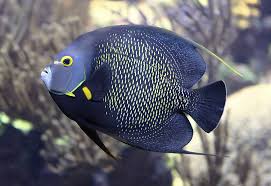Exploring the Meaning of Dragons in Spring Festivals and Summer Rituals of China

In Chinese culture, dragons are one of the most powerful and auspicious symbols, revered for their connection to nature, prosperity, and the divine. Across various cultural practices, festivals, and ceremonies, the dragon often represents the cyclical forces of nature, such as the transition between seasons. In particular, the role of the dragon in spring festivals and summer rituals has deep cultural significance, especially in terms of agricultural prosperity, renewal, and the spiritual connection between humans and the forces of nature. This article delves into the meaning and symbolism of dragons in these traditional events, exploring their role in Chinese society and the profound connection between the dragon and seasonal changes.
The Dragon in Chinese Culture: Symbolism and Associations
Before examining the role of dragons in seasonal festivals and rituals, it is important to first understand their cultural symbolism. In Chinese mythology, the dragon is a benevolent and powerful creature. It is often seen as a harbinger of good fortune, prosperity, and protection. Unlike Western dragons, which are typically portrayed as dangerous, destructive creatures, Chinese dragons are considered symbols of auspiciousness, strength, and the natural world. Dragons in China are deeply connected to the elements, especially water, rain, and fertility, which are vital for agricultural success.
The dragon is also a symbol of imperial power and is closely associated with the emperor, who was often referred to as the “Son of the Dragon.” As such, the dragon represents the harmonious balance of nature and the ruler’s ability to maintain that balance. Given this deep connection to the cycles of nature, dragons are integral to both the Spring Festival and summer rituals, where they symbolize renewal, protection, and the balance of the natural world.
The Role of Dragons in the Spring Festival (Chinese New Year)
The Spring Festival (known as Chun Jie), also referred to as the Chinese New Year, is one of the most important traditional holidays in China. Celebrated at the beginning of the lunar calendar year, this festival marks a time of renewal, rebirth, and the welcoming of new opportunities. It is a celebration of family, prosperity, and the turning of the seasons.
Dragons play a central role in the Spring Festival, especially in the form of the Dragon Dance. The Dragon Dance is one of the most iconic traditions associated with Chinese New Year, and it involves a group of performers who carry a long dragon made of fabric and bamboo, imitating the movement of a dragon. The dragon is often adorned with bright colors and intricate designs, representing strength, good fortune, and protection.
The Dragon Dance is believed to bring good luck and drive away evil spirits, ensuring that the new year begins with prosperity and positive energy. The dragon is seen as a symbol of the revitalization of the land and its people, as it brings rain and fertility—two essential elements for a successful agricultural year. In many parts of China, the dance is performed at parades and public gatherings, accompanied by the beating of drums and the sounds of firecrackers, which are meant to scare away evil spirits and create an atmosphere of joy and festivity.
In the Spring Festival, the presence of the dragon is also symbolic of the power of the natural elements, especially water and rain, which are crucial for the growth of crops in the coming year. The dragon’s association with water is particularly significant in the agricultural societies of ancient China, where the success of the harvest depended on the patterns of rainfall. The Spring Festival, therefore, serves not only as a time of familial celebration but also as a ritual to honor the forces of nature that sustain life.
The Dragon in Summer Rituals: The Dragon Boat Festival
The Dragon Boat Festival (known as Duanwu Jie) is another significant event in the Chinese calendar, typically celebrated on the 5th day of the 5th month of the lunar calendar. This festival is marked by dragon boat races, where teams paddle in long boats shaped like dragons, competing to reach the finish line first. While the Dragon Boat Festival is popularly associated with the legend of Qu Yuan, a patriotic poet and statesman, its connection to dragons goes much deeper.
The dragon boat races are one of the most recognizable traditions of the festival, and they are believed to invoke the spirit of the dragon to ensure good fortune and a bountiful harvest. The dragon is a symbol of strength, vitality, and endurance, and the races themselves are seen as a way to honor the dragon’s power and request its blessings for the upcoming summer months. The act of rowing the dragon boats is a tribute to the dragon’s role in controlling the waters, bringing rain, and ensuring agricultural prosperity.
The Dragon Boat Festival also includes the preparation and consumption of zongzi, sticky rice dumplings wrapped in bamboo leaves, which are thought to offer protection against evil spirits. These offerings, along with the boat races, create a strong connection between the dragon and the protection of the people. The festival emphasizes themes of community, unity, and reverence for nature’s powers, with the dragon acting as a symbol of protection and blessing.
Additionally, the festival marks a time when the forces of nature are at their peak, with the summer solstice approaching. In traditional Chinese belief, the fifth month of the lunar calendar is associated with the “yang” energy, which is linked to vitality, heat, and growth. As the summer months are often hot and dry, the dragon is invoked to ensure that there is enough water for crops to thrive. The dragon’s association with water and rain is considered vital during this time, as the proper balance of these elements ensures the survival and prosperity of the land.
Dragons in Rituals for Agricultural Protection
In both the Spring Festival and the Dragon Boat Festival, the dragon is not only a symbol of strength but also of protection and fertility, both of which are essential for a successful agricultural year. In ancient China, agriculture was the backbone of the economy, and the success of the harvest was closely linked to the gods and spirits. Farmers would often conduct rituals to invoke the dragon’s blessings, ensuring that their crops would grow strong and that there would be enough rain for a bountiful harvest.
During the Spring Festival, people would perform ceremonies and make offerings to the dragon to seek its blessings for the upcoming year. These rituals were often held at temples or other sacred places, where people would pray for good weather, a successful harvest, and protection from natural disasters. The dragon, in this context, is seen as a guardian of the earth, helping to maintain harmony between heaven and earth, as well as a symbol of the forces that govern nature.
The Dragon as a Symbol of Seasonal Transition
In both the Spring Festival and summer rituals, the dragon symbolizes the transition between seasons and the cycles of nature. In Chinese cosmology, there is a strong connection between the natural world and human activity, and the dragon is seen as a mediator between the two. The Spring Festival marks the beginning of a new year, the renewal of life, and the hope for a prosperous harvest. The dragon’s role in the rituals surrounding the festival emphasizes its power to bring about change and transformation, facilitating the flow of energy and harmony between the seasons.
Likewise, in the Dragon Boat Festival, the dragon is invoked as a symbol of summer, bringing vitality and life to the land. The festival marks a crucial point in the agricultural cycle when the summer months begin and the need for rain and water becomes more pressing. The dragon’s connection to water and its role in ensuring the balance of natural forces reinforces its importance in these seasonal rituals.
Conclusion: The Dragon’s Timeless Role in Chinese Seasonal Rituals
Dragons have played a vital role in Chinese culture for thousands of years, serving as symbols of strength, protection, and prosperity. In both the Spring Festival and Dragon Boat Festival, the dragon represents the cyclical forces of nature, the protection of the land, and the hope for a bountiful harvest. Through dragon dances, boat races, and agricultural rituals, the Chinese people continue to honor the dragon as a powerful and benevolent force that brings good fortune, fertility, and protection.
The dragon’s association with water, rain, and vitality underscores its significance in these seasonal events, reminding the Chinese people of their deep connection to nature and the forces that govern the world. As the dragon continues to be invoked in these rituals, it remains a timeless symbol of renewal, prosperity, and the enduring bond between the natural world and human existence. Whether through the celebrations of the Spring Festival or the summer rituals of the Dragon Boat Festival, the dragon’s presence in these events serves as a reminder of the importance of balance, protection, and harmony in the cycles of life.

